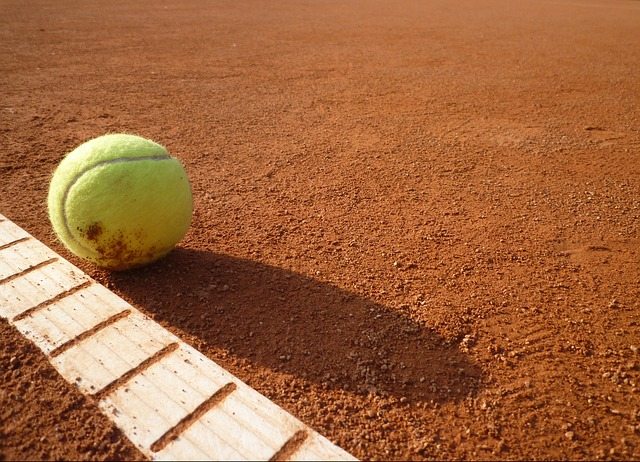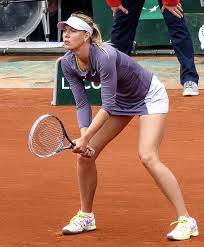Queen of Clay Seeks to Rebuild Her Empire
From the 21st April – 7th June 2014, Maria Sharapova shrieked and scrambled her way through one the most successful seasons of her already illustrious career, winning three of the four clay court tournaments she entered: the Porsche Tennis Grand Prix, the Mutua Madrid Open and Roland Garros, her fifth Grand Slam title. After missing the latter half of 2013 due to a shoulder injury and suffering losses earlier in the year, Sharapova was at one point, one loss away from dropping out of the top ten for the first time since 2011. Fortunately, she avoided this by not merely pulling through the necessary matches but dominating the women’s game for this very short but significant period of time, re-securing her place in the record books as well as in the top ten.
Miraculously, Sharapova entered the 2014 clay-court season as a possible top ten drop-out and emerged from it as the two-time French Open champion that she is today. To anyone who follows tennis, this is an admirable but, nevertheless, unsurprising feat. Maria Sharapova currently possesses the best record on clay of all active players in the women’s game. Since June 2011, she has only ever lost to two players on this surface: once to a resurgent Ana Ivanovic (in Rome last year) and three times to her arch nemesis of ten years, Serena Williams. And Roland Garros is now the Grand Slam tournament at which she holds her best win-loss record, with her last two major wins coming to her on the red clay of the Court Philippe Chatrier. Of course, she’s had record-breaking success on all surfaces, lifting the champion’s trophy once at each of the other three majors. But, there’s just something irresistible about Maria’s game during this time of the year.
Miraculously, Sharapova entered the 2014 clay-court season as a possible top ten drop-out and emerged from it as the two-time French Open champion that she is today
So, what is it about the dirt that turns Maria Sharapova into probably the most consistent and formidable player in the women’s game? Playing on the green clay of the Family Circle Cup, Charleston in early April of this year, an unseeded Chanelle Scheepers dominated Andrea Petkovic, the defending champion, in the first set of their second round encounter, taking it at 6-1. During the sit-down, Petkovic’s coach simply told her that she was ‘playing hard-court tennis’ and that if she wanted to win this match she would have to ‘be more patient’. Petkovic ended up winning the match 1-6 6-1 6-2.
Believe it or not, it is that simple! Clay courts play considerably slower and bounce the ball higher than any other surface. Balls which you would never expect to make their way back over the net on a grass or hard court somehow do on this surface, meaning that if you are a naturally aggressive player, you should expect to have to hit a great deal more ground strokes than usual before you can step into the court and hit the winner.
Patience is essential. And no one has more patience in this game than Maria Sharapova. Although her movement has improved drastically over the last four years and she no longer resembles the ‘cow on ice’ she previously did whilst playing on the dirt, it is this mental aspect of her game which allows her to win the majority of these matches. When she returned to the game in March 2009 after being forced out for six months by a career-threatening shoulder injury, Sharapova no longer had the explosive serve that earned her so many free points and drove her to victory at Wimbledon as well as the U.S. and Australian Open. This comparative lack of physical artillery is what stimulated the unwavering mental fortitude that has since become her trademark. With the points not coming as easily as they used to, patience became a key aspect of her game and it was this newly discovered endurance that finally allowed her to become only the sixth woman in the Open Era to complete the Career Grand Slam at Roland Garros in 2012.
her movement has improved drastically over the last four years and she no longer resembles the ‘cow on ice’ she previously did whilst playing on the dirt
Sharapova has no qualms about waiting around for things to click – which they often do – as we saw time and time again last year. During the clay-court season alone, she came back from the brink to win matches against Lucie Šafářová, Christina McHale, Li Na, Simona Halep, Samantha Stosur, GarbiñeMuguruza, Eugenie Bouchard and, notably, Ana Ivanovic during the championship match in Stuttgart.
After initially leading 5-0, Ivanovic broke Sharapova’s serve at 5-3 to win the first set and found herself within arm’s reach of ending her opponent’s two-year stranglehold on the WTA Premier event. Ivanovic waltzed into the second set with confidence and broke again for a 3-1 lead, with her opponent attempting to plough and scream her way back into the match. She was broken back but had a chance to re-establish her lead and put herself within two games of the title. It was at a set and break point down when Sharapova’s game started to ‘click’, and just in time. When a seemingly irretrievable return from Ivanovic made its way into a distant section of Sharapova’s backhand corner, the Russian didn’t only run it down but, at full stretch, managed to fire it down the line to produce one the most breathtakingly unlikely winners of the year. The tone of the match was irrevocably altered from that moment and Ivanovic would only win two more games as Sharapova stormed to a 3-6 6-4 6-1 victory and a third consecutive title in Stuttgart.
Now, the question: will Maria Sharapova be able to defend the points she earned last year and retain her title as the ‘Queen of Clay’?
As we saw during her second and third-round exits to Garbiñe Muguruza and Alizé Cornet at Roland Garros and Wimbledon last year, even Serena Williams does not possess that level of patience. Last year, when behind against opponents who she had wrongly underestimated, Serena’s frustration seemed to rise with her unforced error count as she indignantly resigned herself to a loss which was, with her abilities, very much avoidable.
Now, the question: will Maria Sharapova be able to defend the points she earned last year and retain her title as the ‘Queen of Clay’? After pulling out of the Fed Cup with a leg injury, it’s uncertain whether she will even be fit enough to defend those points in Stuttgart. And with Serena playing much more consistently than last year and rising star Simon Halep only getting better and better, clay-court season is hardly going to be a breeze. But, if anyone is up to the challenge, it’s Maria Sharapova.
The Porsche Tennis Grand Prix begins in Stuttgart, Germany on 20th April with Sharapova, the defending champion, as the top seed.


Comments